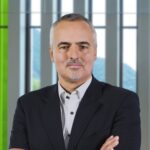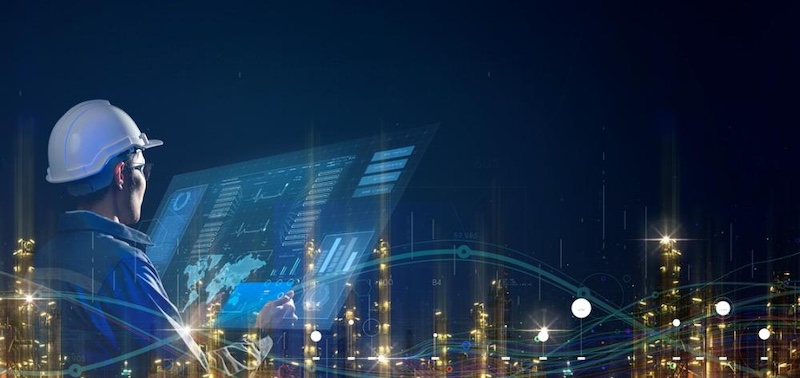Schneider Electric is best known as a global leader in power systems and energy management – the company that keeps the world’s infrastructure running.
Less visible, but increasingly vital to its strategy, is a growing digital and software-driven business focused on automation, IoT, and AI. At the centre of that transformation is Peter Weckesser, Schneider Electric’s chief digital officer.
Weckesser doesn’t see technologies such as AI, IoT, and digital twins as disruptive forces, but as “strategic enablers of resilience, efficiency, and competitive growth”.
Under his leadership, Schneider has expanded its digital ecosystem through initiatives like the EcoStruxure platform, the One Digital Grid, and collaborations with partners including Nvidia and ETAP to create advanced industrial digital twins.
In this interview, he discusses how digitalisation is reshaping industries from data centres to power grids, why cultural change is as important as technology itself, and how Schneider’s open, interoperable approach is helping customers navigate energy transitions, sustainability goals, and a rapidly evolving industrial landscape.
Interview with Peter Weckesser
Robotics & Automation News: You’ve said that AI, IoT, software, and digital twins are not disruptions but enablers. Could you expand on how you see these technologies working together to drive resilience and efficiency in industry?

Peter Weckesser: AI, IoT, software-defined systems, and digital twins are most powerful when working together. IoT acts as the nervous system, collecting real-time data from assets. AI is the brain, turning that data into predictive insights and decisions.
Software-defined systems provide agility, allowing industries to reconfigure operations digitally without costly downtime. Digital twins create a virtual mirror, enabling leaders to test, simulate, and optimize strategies safely.
Integrated, these technologies shift organizations from reactive to predictive, improving resilience, efficiency, and sustainability.
They help anticipate disruptions, streamline resources, and lower emissions, building stronger, more adaptable industries for a future defined by uncertainty.
R&AN: Digital twins are gaining traction in industrial operations and data centers. Where do you see the most compelling use cases today, and how is Schneider helping customers realize value from them?
PW: Today, digital twins are especially powerful in data centers and electrical infrastructure. In data centers, they help optimize cooling, forecast capacity, and prevent downtime.
In power systems, Schneider Electric’s EcoConsult Electrical Digital Twin service maintains live models of electrical single line diagrams to boost safety, compliance, and reliability.
We also collaborate with ETAP and Nvidia on the world’s first grid-to-chip digital twin for AI factories, allowing customers to simulate power requirements before investing in physical assets.
R&AN: Schneider Electric works across diverse domains – from infrastructure to automation to energy management. What are the biggest challenges in bringing digital transformation consistently across such a wide customer base?
PW: The biggest challenge is how industries differ in digital maturity, data quality, and if they are still using legacy equipment.
In addition, regulations and sustainability priorities vary globally. To address these challenges, we design open, interoperable, and secure solutions that adapt to each context at scale.
Schneider Electric focuses on measurable ROI and simplifying deployment, so customers aren’t bogged down by complexity. Digital transformation also requires cultural change to help people trust data, AI, and digital twins in daily operations.
That’s why we emphasize the importance of following AI ethical guardrails and being thoughtful about change management to drive consistent digital outcomes across energy, automation, and infrastructure.
R&AN: AI adoption in industry often raises concerns around complexity and ROI. How do you advise industrial leaders to prioritize and implement AI initiatives in a way that delivers measurable outcomes?
PW: We encourage leaders to prioritize applications that they can tie to business outcomes. We recommend looking at use cases that have good data to start with and clear pain points, such as downtime, energy waste, or maintenance costs.
AI deployment should be tied to improving measurable KPIs like reduced energy use or faster commissioning. Once value is proven, scale gradually while maintaining strong data pipelines and governance.
By aligning AI with operational priorities, companies can reduce risk, increase efficiency, and lower carbon impact, all while building confidence in the next generation of digital tools.
What’s more, AI delivers the most value when it’s embedded across operations, not treated as a standalone experiment.
We encourage industrial leaders to focus on use cases that can scale enterprise-wide, supported by high-quality data and clear KPIs.
At Schneider Electric, we see success when organizations build a solid digital foundation, such as combining IoT, edge computing, and digital twins to deploy AI responsibly and at scale.
Scaling AI isn’t just about pilots; it’s about creating repeatable, sustainable impact across the business.
R&AN: With supply chain volatility, energy transitions, and sustainability goals shaping global priorities, how does Schneider’s digital strategy help customers navigate these pressures?
PW: Our digital strategy provides the tools to see, simulate, and act with confidence. Schneider Electric’s EcoStruxure and new One Digital Grid Platform deliver real-time visibility, predictive analytics, and digital twins for grid planning and operations.
These platforms let companies stress-test scenarios, manage distributed energy resources, and optimize carbon and cost.
We listen to our clients to understand their unique challenges and offer our expertise through SE Advisory Services that help turn data into foresight. We help industries navigate uncertainty while achieving resilience, efficiency, and sustainability.
R&AN: Innovation in automation is often about partnerships and ecosystems. How is Schneider collaborating with startups, technology providers, and customers to accelerate industrial digitalization?
PW: We firmly believe innovation thrives in ecosystems, not silos. At Schneider Electric, we collaborate with startups, universities, and technology leaders to co-develop solutions.
Our partnership with ETAP and Nvidia created a first-of-its-kind digital twin for AI factories, simulating energy use from grid to chip.
Through our EcoStruxure platform, we foster an open developer community and integrate customer feedback into design.
These collaborations ensure our innovations are practical, interoperable, and impactful. Working together ensures solutions meet real industrial challenges.
R&AN: Communicating digital transformation is as critical as delivering it. How does Schneider approach engaging with industry audiences – through thought leadership, partnerships, or media platforms – to share its vision and market leadership?
PW: At Schneider Electric we believe authentic engagement starts by meeting customers and partners where they are: listening to their real-world challenges, co-creating solutions and inviting them to our flagship events, like the Innovation Summit North America 2025 in Las Vegas.
We also actively engage with policymakers, regulators and industry analysts to advance frameworks, standards, and ecosystem alignment across energy, automation and sustainability domains.
Finally, we complement those efforts with our podcast, AI at Scale sharing practitioner stories, insights, and actionable ideas to reach a broader audience and progress the conversation.

